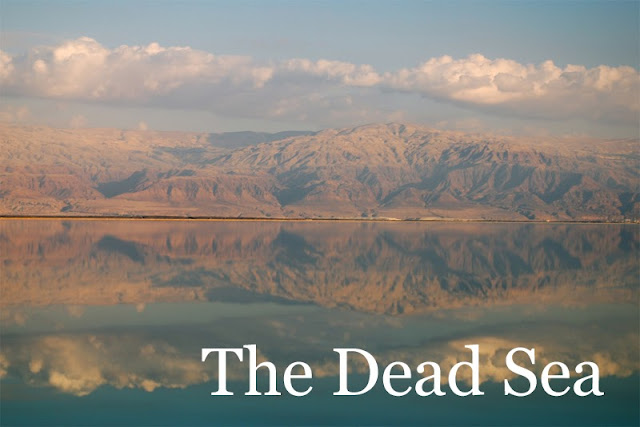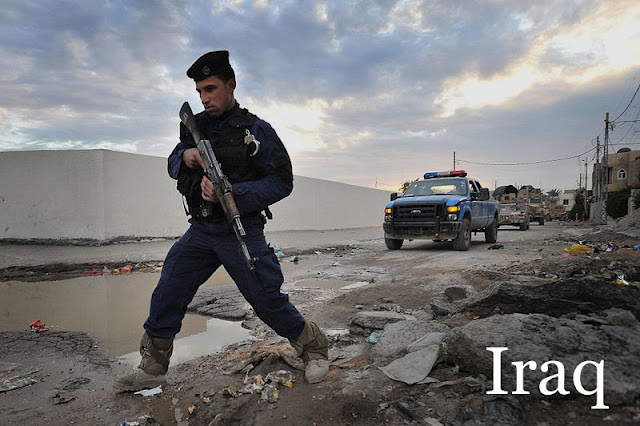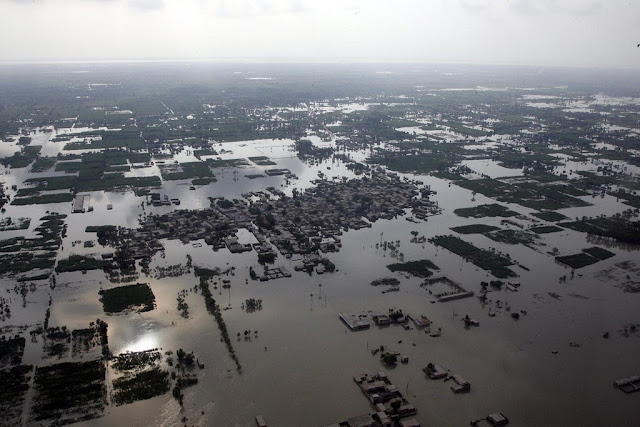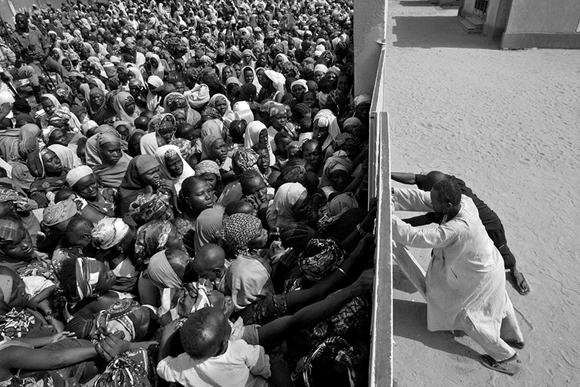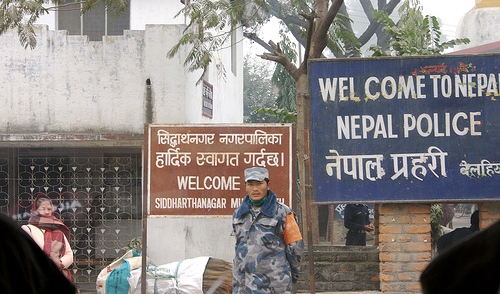-
The Dead Sea: A Pathway to Peace for Israel and Jordan?
›September 7, 2010 // By Russell SticklorThe Middle East is home to some of the fastest growing, most resource-scarce, and conflict-affected countries in the world. New Security Beat’s “Middle East at the Crossroads” series takes a look at the most challenging population, health, environment, and security issues facing the region.
Amidst the start of a new round of Middle East peace negotiations, the fate of the Dead Sea — which is divided between Israel, Jordan, and the West Bank — may not seem particularly relevant. But unlike the perpetually thorny political issues of Israeli settlement policy and Palestinian statehood, the Dead’s continuing environmental decline has sparked rare consensus in a region beset by conflict. Israelis, Jordanians, and Palestinians all agree that something must be done. The much more difficult question, however, is what. But no one is lacking for ideas.Who Stole the Dead’s Water?
Some 1,400 feet below sea level, the shoreline of the Dead Sea lies at the lowest dry point on the planet. Since the 1970s, this ancient inland saltwater sea has been changing, and fast, with the water level dropping at a rate of three feet per year. The region’s stifling heat and attendant high evaporation rates have certainly played their part. But the real culprits are irrigated agriculture and household water demand, spurred by population growth, which have siphoned off much of the precious little water that once flowed into the sea.
Historically, the Jordan River and its tributaries have contributed roughly 75 percent of the Dead’s annual inflow, or about 1.3 billion cubic meters per year. Even though the Jordan isn’t a large river system, it is an economic lifeline in this parched region. The basin’s waters have been tapped to the point of exhaustion by businesses, farms, and households in Israel, Jordan, the West Bank, and, father afield, Syria and Lebanon. With the cumulative population of those areas projected to increase by 68 percent between now and 2050 (or from 44.9 million today to 75.4 million by mid-century), strain on the region’s water supply will only increase with each passing year.
Already, the Jordan and its tributaries are far worse for the wear. Pollution is an ongoing concern thanks to untreated wastewater entering the river system, while a sprawling network of dams and other irrigation diversions to “make the desert bloom” has carried with it a hefty environmental price tag. The Jordan now delivers a scant 100 million cubic meters to the Dead each year, with up to 50 percent of that flow likely contaminated by raw sewage due to inadequate wastewater treatment upstream.
Meanwhile, water depletion rates in the Dead have been exacerbated by mineral-extraction companies on the sea’s southern reaches, which rely heavily on evaporation ponds to remove valuable minerals from the saltwater.
Tapping the Red
Attempts to internationalize the environmental dilemmas facing the greater Dead Sea region range from a proposed transborder “peace park” in the Jordan River valley to a global, internet-driven campaign to vote the Dead Sea as one of the seven natural wonders of the world. But by far the most ambitious — and controversial — idea for restoring the Dead Sea’s health is to build a 186-mile canal to bring in water from the Red Sea.
The plan has been around for decades, but has not gotten off the drawing board due to its large scale and costs. The project’s centerpiece would be a waterway built through the Arava Desert Valley along the Israeli-Jordanian border. Proponents on both sides of the border say the canal could help raise the Dead’s surface level, helping restore the area’s struggling ecosystems. And given the canal’s substantial elevation drop from sea level to shoreline, its waters could likely be harnessed for hydroelectricity, powering desalination plants that would provide new fresh water for the region.
The project could also harness cross-border environmental issues to transcend long-standing political and religious divisions between the region’s Jewish and Arab populations. “People are saying that water will cause wars,Dr. Hazim el-Naser in a 2002 interview on the canal project, when he served as Jordanian minister of water and irrigation. “We in the region, we’re saying, ‘No.’ Water will enhance cooperation. We can build peace through water projects.” Currently, the canal proposal is the subject of a World Bank feasibility study expected to be completed in 2011.
Deep Skepticism Remains
Still, as diplomatically and environmentally promising as a Red-Dead canal may seem, not everyone is on board with the proposed project. Environmentalists’ concerns run the gamut from unintended ecological impacts on the Dead Sea’s delicate chemical composition, to a sense that, even after decades of on-and-off consideration, the project is being pushed at the expense of other possible policy options.
The New Security Beat recently contacted Mira Edelstein of the international environmental nonprofit Friends of the Earth Middle East via email to discuss some of the group’s concerns about the canal. Edelstein highlighted some of the potential pitfalls of — and alternatives to — a canal link to the Dead:
New Security Beat: How have population growth and the corresponding rise in food demand in Israel, Jordan, and the West Bank affected the Dead Sea’s health?Mira Edelstein: The Jordanian and Israeli agricultural sectors still enjoy subsidized water tariffs, making it easy to continue growing water-intensive crops. But this depletes flows in the lower Jordan River system, and directly impacts the Dead Sea.
NSB: Why is your organization opposed to the idea of a Red-Dead canal link?ME: Friends of the Earth Middle East does not support a Red Sea link, as this option carries the risk of irreparable damage. We believe that this option will not only damage the Dead Sea itself — where the mixing of waters from two different seas will surely impact the chemical balance that makes the Dead Sea so unique — but also because we are worried that pumping such an enormous amount of water from the Gulf of Aqaba will likely harm the coral reefs in the Red Sea itself.
NSB: What steps do you propose to improve environmental conditions in the Dead Sea and the Jordan River valley?
Additionally, the Arava Desert Valley, where the pipes will be laid, is a seismically active region. Any small earthquake might damage the pipes, causing seawater to spill and polluting underground freshwater aquifers.ME: It all has to do with the water policies in the region. The governments [of Israel, Jordan, and the West Bank] desperately need to reform our unsustainable policies, and at the top of this list is agriculture. This means removing water subsidies and changing over from water-intensive crops to more sustainable crops appropriate for the local environment.
Sources: Friends of the Earth Middle East, Israel Marine Data Center, Israel Ministry of Foreign Affairs, National Geographic, the New York Times, Population Reference Bureau, United Nations, Washington Post, Waternet, the World Bank.
In addition, wastewater treatment plants need to be built throughout all of the Jordan valley region so that only treated wastewater is used for agriculture. Some of that treated water, and of course fresh water, should be brought back into the Jordan River system that will later flow into the Dead Sea…In addition, ecotourism projects should be encouraged, as they are an economic stimulus that can help support greater environmental conversation in the region.
Photo Credit: “Dead Sea Reflection,” looking east across the Dead Sea to the Jordanian shore, courtesy of flickr user Mr. Kris. -
Water, Power, Trash, and Security: Interview with Mishkat Al Moumin, First Iraqi Minister of the Environment
›August 31, 2010 // By Schuyler NullAs the final American combat brigade pulls out of the country, the prevailing opinion in the United States about Iraq at the moment seems to be one of “bad politics are better than no politics,” and that despite continued violence (albeit significantly lessened from 2006-2007 levels), the American mission is largely finished. However, serious challenges remain, one of the most significant being the government’s continued inability to supply basic services to a growing population.
-
Historic Floods Plague Pakistan
›August 19, 2010 // By Shawna Cuan“Staggered by the scale of destruction from this summer’s catastrophic floods, Pakistani officials have begun to acknowledge that the country’s security could be gravely affected,” reports the Washington Post. The Pakistani government – already cash-strapped between fighting “the war on terror” and trying to prevent an economic collapse – now faces recovering from the worst flooding in over 80 years.
-
Flooded With Food Insecurity in Pakistan
›The floods sweeping across Pakistan have caused widespread destruction, ruined livelihoods, displaced millions, and sparked a food crisis. Food prices have skyrocketed across the country as miles of farmland succumb to the deluge, including 1.5 million hectares in Punjab province, Pakistan’s breadbasket and agricultural heartland.
Food insecurity is now rife across the country — yet even before the floods, millions of Pakistanis struggled to access food. Back in 2008, the UN estimated that 77 million Pakistanis were hungry and 45 million malnourished. And while many developing nations have begun to recover from the global food crisis of 2007-08, Pakistan’s food fortunes have remained miserable. Throughout 2010, Pakistan’s two chief food staples, rice and wheat, have cost 30 to 50 percent times more than they did before the global food crisis. Drought, rampant water shortages, and conflict have intensified food insecurity in Pakistan in recent months.
A new edited book volume published by the Wilson Center’s Asia Program, Hunger Pains: Pakistan’s Food Insecurity, examines the country’s food insecurity. The book has already been the subject of a news story and an editorial in the Pakistani newspaper Dawn. The book, edited by Michael Kugelman and Robert M. Hathaway, is based on the 2009 Wilson Center conference of the same name. It assesses food supply challenges, access issues, governance constraints, social and structural dimensions, gender and regional disparities, and international responses.
The book makes a range of recommendations. These include:- Declare hunger a national security issue. Since some of Pakistan’s most food-insecure regions lie in militant hotbeds, hunger should be linked to defense, and food provision projects should be given ample public funding.
- Diversify the crop mix so that Pakistan’s agricultural economy revolves around more than wheat and rice. The country should accord more resources to crops that are less water-intensive and more nutritious.
- Give schools a central focus in food aid and food distribution. Using schools as a venue for food distribution gives parents powerful incentives to send their children to school.
- Tackle the structural dimensions. Strengthening agricultural institutions, improving infrastructure and storage facilities, and injecting capital into a stagnant farming sector are all key to making Pakistan more food-secure. Yet unless Pakistan deals with poverty, landlessness, and entrenched political interests in agriculture, food insecurity will remain.
Michael Kugelman is program associate with the Asia Program at the Woodrow Wilson International Center for Scholars.
Photo Credit: “Chitarl, Pakistan” where floods damaged the way over Lawari pass and killed five in August 2006. Courtesy of flickr user groundreporter -
Population Reference Bureau Releases New Projections
Seven Billion and Counting
›August 6, 2010 // By Russell SticklorThe Population Reference Bureau recently released its annual World Population Data Sheet, and lo and behold, the world is getting more crowded. By next year, the global total is expected to top seven billion, as we march toward upwards of nine billion by mid-century.
Much of that growth, of course, will be unfolding across Asia — China and India already account for more than 35 percent of the world’s population, and the two countries will continue to drive global demographic change. But the PRB report emphasized that Africa will also contribute significantly to world’s shifting demographics in the coming decades. By 2050, the continent’s population is slated to double, reaching the neighborhood of two billion. In that time span, the Democratic Republic of Congo and Ethiopia are expected to knock Russia and Japan off the list of the world’s top 10 most populous nations.
The Young Continent
Africa’s population growth through 2050 could actually be even greater than PRB predicts, since current projections assume that total fertility rate in sub-Saharan Africa will drop from 5.2 to 2.5 in that time span. The assumption is that as the region’s countries travel farther down the path to economic modernization, access to family planning services will become more widespread, resulting in smaller average family sizes—a trend well-documented in other parts of the developing world.
A slower than expected decrease in total fertility rate (TFR) across sub-Saharan Africa over the next 40 years could render current predictions inaccurate, however. While TFR has dropped significantly over the past 50 years in countries like Ghana (where it is now 4.0), just 17 percent of married women in sub-Saharan African utilize a modern type of family planning. That is one of the reasons Africa as a whole maintains a high average TFR of 4.7 children per woman, and why countries like Niger and Uganda sport some of the highest TFRs in the world (at 7.4 and 6.5, respectively).
According to the 2010 PRB Data Sheet, Africa is also notable for its demographic youth bulge. Of the world’s 10 countries with the highest percentage of their populations aged 15 or younger, nine of them—Niger, Uganda, Burkina Faso, the DRC, Zambia, Malawi, Chad, Somalia, and Tanzania—are on the continent. The question facing these countries is whether their young populations will yield a “demographic dividend” during the coming decades, whereby the large youth bulges translate into a sizeable and productive workforce. Harnessing the economic potential of the younger generation could help accelerate the development process in many of the region’s nations, but it will require significant investment in health and education infrastructure—funding that may prove hard to come by for many cash-strapped governments.
Persistent Divides
Other findings featured in the report involved sanitation and wastewater treatment, where some headway is being made at the global level. The PRB Data Sheet reveals that 43 percent of urban populations in sub-Saharan Africa (and 24 percent of the region’s rural populations) now have access to improved sanitation, while 86 percent of urban populations (and 55 percent of rural populations) have better sanitation services in Latin America and the Caribbean. The figures highlight progress, but reveal the significant divide that persists between urban and rural areas in terms of access to quality sanitation. According to the PRB, some 2.7 billion people—40 percent of the world’s total—still do not enjoy adequate sanitation facilities, and most live in rural areas of the developing world.
Finally, an interesting trend that will impact developed and developing nations alike involves elderly support ratios, or the number of active workforce members between the ages of 15 and 64 available to support a nation’s non-working, 65-and-older population. While rapidly growing countries in the developing world will continue to enjoy high elderly support ratios, a number of countries across the developed world will face a potential financial crisis, as comparatively low support ratios combine with rapidly aging populations to strain available financial resources earmarked for covering pension payments and healthcare infrastructure costs. To make up for the shortfall over the coming decades, the PRB report predicts that some developed nations may be inclined to further throw open the doors to immigration to bolster workforce ranks—a step recommended by Jack Goldstone in ECSP Report 13.
Sources: New York Times, Population Reference Bureau, Population Council, PR Newswire, United Nations Population Division, WHO/UNICEF Jointing Monitoring Programme for Water Supply and Sanitation
Photo Credit: “Famine in Niger, Africa,” courtesy of flickr user liquidslave. -
Wilson Center’s Michael Kugelman Finds the Real Culprit in Pakistan’s Water Shortage
›July 28, 2010 // By Wilson Center StaffExcerpt from Dawn:
ON Jan 15, 2006, the Karachi Port Trust (KPT) inaugurated its new fountain – the Rs320m lighted harbour structure that spews seawater hundreds of feet into the air.
Also on this day – as on most others in Karachi – several million gallons of the city’s water supply were lost to leakage, some hundred million gallons of raw sewage oozed into the sea, and scores of Karachiites failed to secure clean water.
Over the next few years, the fountain jet would produce a powerful and relentless stream of water high above Karachi. Meanwhile, down below, tens of thousands of the city’s masses would die from unsafe water.
After several fountain parts were stolen in 2008, the KPT quickly made the necessary repairs and re-launched what it deems “an extravaganza of light and water”.
In an era of rampant resource shortages, boasting about such extravagance demonstrates questionable judgment. So, too, does the willingness to lavish millions of rupees on a giant water fountain, and then to repair it fast and furiously – while across Karachi and the nation as a whole, drinking water and sanitation projects are heavily underfunded and water infrastructure stagnates in disrepair.
Continue reading on Dawn.
For more on Pakistan’s water crisis, see the Wilson Center report, “Running on Empty.”
Photo Credit: Adapted from UN map of South Asia, courtesy of Wikimedia Commons. -
A Return to Rural Unrest in Nepal?
›July 27, 2010 // By Russell SticklorIn the four years since the end of Nepal’s civil war, political progress in creating a multi-party unity government in Kathmandu has moved in fits and starts. While the effort to bring the Maoists into the fold has made some headway since 2006, continuing environmental and economic troubles in the Nepalese countryside threaten to undermine these tentative steps.
In recent months, a new threat to political stability has emerged: the Sapta Kosi Multipurpose Project, a massive, India-backed hydropower scheme in eastern Nepal currently in the early stages of development. Once operational, the controversial dam—slated to reach a height of nearly 270 meters, making it one of the tallest dams in the world—is projected to generate 3,300 megawatts of electricity.
A proposed barrage and series of canals round out the project, enabling new irrigation and flood-control infrastructure in both eastern Nepal and the Indian state of Bihar, immediately to the south. But the potential environmental impacts of the mega-project have already sparked significant backlash among some Maoist-linked ethnic groups in the region, where the reach and influence of Nepal’s fledgling unity government is tenuous at best.
“Strong” Protests Threatened Over India-Backed Mega-Dam
In June, a network of 15 groups sympathetic to the Nepalese government’s Maoist wing warned of “strong” protests if survey work on the dam continued and “the voice of the indigenous people was not heard.” A memo released by the group dismissed the Sapta Kosi project as “anti-people.”
Specific criticisms of the project have ranged from safety concerns (the dam would be built in a seismically active region) to population displacement. Maoist leaders in the region have alleged that many villages—as well as important local religious sites and valuable agricultural land—could be flooded if the project goes forward. Other Maoists say the project should be delayed until Nepal is reorganized as a federal republic, at which point the states directly impacted by Sapta Kosi could be given greater control over the project.
Meanwhile, some objections to the project have targeted Nepal’s partnership with India. According to ShanghaiNews.net, members of the Maoist opposition have insinuated that hydropower from Sapta Kosi will not be consumed domestically, but rather exported to meet the needs of energy-hungry India.
A number of prominent Nepalese and Indian environmental activists have also spoken against the project, including Medha Patkar, a well-known activist who has played a major role in many past Indian anti-dam protests. Patkar warns the project will not mitigate but instead worsen seasonal flooding, calling plans for the joint India-Nepalese dam project “inauspicious from [an] environmental, cultural and religious point of view,” according to the Water & Energy Users’ Federation-Nepal.
As Nepal Pledges Security for Dam Project, India Pushes Forward
In the past, threats against the Sapta Kosi project have caused surveillance work in the area to be suspended repeatedly. But after the latest round of warnings, the Nepalese government adopted a different tactic, pledging heightened security in the region to ensure the safety of Indian officials doing fieldwork.
In doing so, Nepal’s coalition government is throwing its limited weight around, and—to a degree—staking its reputation on its ability to prevent an outbreak of violence. Historically, Nepal’s government has been largely bypassed or ignored in matters of hydroelectric development. As Nepal Water Conservation Foundation Director Dipak Gyawali told International Rivers in a June 2010 interview:The main players are private investors, with state entities and civil society unable to stand up to them….In Nepal, we just saw local politicians burn down the office of an international hydropower company even after the project was sanctioned by their leaders in the central government.
Gyawali added that during the Nepalese civil war (1996-2006), private developers were able to build “small hydropower projects even while a Maoist insurgency was raging because they did not ride roughshod over local concerns.” Regarding Sapta Kosi, Gyawali said the government should adopt a similar approach, and “start listening to the marginalized voices.” Otherwise, he warned, the Indian-Nepalese team spearheading the project “will be faced with delays, impasse, and intractable political problems,” including the potential for Maoist violence in the region. (As noted earlier this month in New Security Beat, the Indian government has also struggled with Maoist-linked violence in recent years, as New Delhi struggles to pacify a Naxalite insurgency in eastern and central India.)
Rural Nepal’s Troubles Far Bigger Than Sapta Kosi
Maoists may be wielding Sapta Kosi as a weapon to gain political leverage both in the countryside and Kathmandu, but the proposed dam is far from the only environmental issue impacting rural lives and threatening to undermine support for the central government.
In a country where firewood still accounts for 87 percent of annual domestic energy production, deforestation has been hugely problematic across rural Nepal. As of 2010, less than 30 percent of the country’s original forest-cover now remains. The rapid removal of forest cover has reduced soil quality, exacerbated seasonal flooding, and caused degraded water quality due to high sedimentation levels.
Further, as the country’s population grows at an annual rate of 2 percent, low soil productivity and unsustainable farming practices have turned Nepal’s effort to feed itself into a constant uphill struggle. According to the World Bank, the country sports one of the world’s highest ratios of population to available arable land, paving the way for potential further food shortages.
Sustainable energy development in Nepal perhaps represents one way of slowly restoring environmental health to the country. By investing in a more reliable national power grid, the central government could reduce rural dependence on firewood for fuel, allowing the country’s forests, soil, and waters to recover even as population increases. Further, hydroelectric projects like Sapta Kosi—implemented with greater involvement from local communities—could play an important role in moving the country forward. With an estimated untapped hydroelectric potential of 43,000 megawatts, Nepal could not only meet its own energy needs by developing its waterways, but profit from hydroelectric energy exports as well.
On the other hand, the Nepalese government could—at its own peril—continue to overlook rural populations’ grievances, and the environmental degradation unfolding outside Kathmandu. If left unchecked, however, these conditions could once again make the Maoist insurgency an appealing movement, potentially reviving grassroots support for anti-government extremism.
Sources: CIA, eKantipur.com (Nepal), International Rivers, Kathmandu Post, NepalNews.com, New York Times, ShanghaiNews.net, South Asia News Agency, Taragana.com, Thaindian News, Times of India, U.S. Energy Information Administration, WaterAid, Water & Energy Users Federation-Nepal, World Bank, World Wildlife Fund.
Photo Credit: “Neither in Nepal Nor India,” courtesy of Flickr user bodhithaj. -
Time to Give a Dam: Alternative Energy as Source of Cooperation or Conflict?
›July 8, 2010 // By Kayly OberMitigation can be a means to peace, not just conflict, said Stacy VanDeveer in the lead up to Backdraft: The Conflict Potential of Climate Mitigation and Adaptation at the Woodrow Wilson Center on June 10. VanDeveer believes that mitigation techniques, particularly alternative energy sources like hydroelectric dams, could stimulate cooperation rather than exacerbate threats.
Showing posts from category water.


